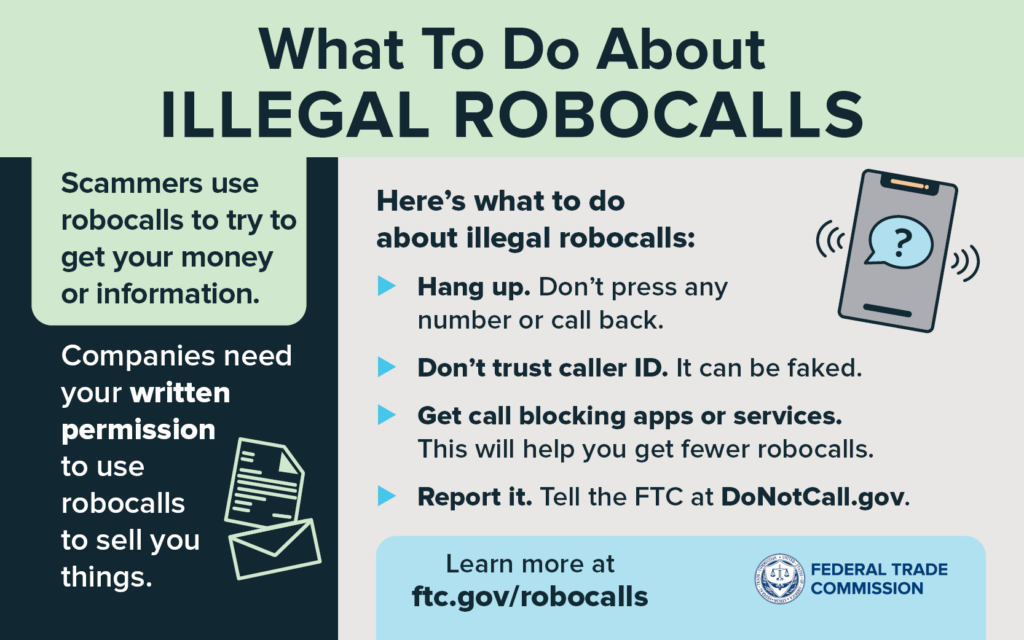
By Joel Dresang
Working from home the other day, my cell phone rang. The screen warned it was probably a robocall. So, I dismissed it. Immediately, our house phone rang. Caller ID said the call was from the same number.
Even if you don’t answer them (which you shouldn’t), robocalls are a nuisance. And don’t get me started on robotexts.
Do Not Call Registry
Robocalls, frequently asked questions, from the Federal Trade Commission
Stop Unwanted Robocalls and Texts, from the Federal Communications Commission
The Best Ways to Block Robocalls, from Consumer Reports, 2021
The Consumer Reports Scam Protection Guide
Unsolicited calls in general are an irritant. That’s why, since 2003, the U.S. government has had a Do Not Call Registry, which lets you add your phone number to a list that most solicitors aren’t supposed to call.
Since 2009, the Federal Trade Commission has banned most robocalls. And still, they flourish.
A few years ago, the Federal Communications Commission set up call-filtering technology, which actually slowed the stream of robo-annoyances. Still, the YouMail Robocall Index counted 4.1 billion such disturbances in June. That amounts to 5.7 million robocalls per hour, 1,600 per second. It means each of us, on average, got 12.6 robocalls that month. And that seems like an undercount to me.
Just last month, the FCC proposed a rule regulating the use of artificial intelligence in robocalls, following its order a few months earlier banning AI-generated voices in the calls.
“Unwanted calls – including illegal and spoofed robocalls – are the FCC’s top consumer complaint and our top consumer protection priority,” the agency states.
While the government keeps trying to do its part, here’s what you can do to minimize fallout from robocalls and robotexts, based on advice from the FCC, the FTC and Consumer Reports:
- Foremost, do not engage with unsolicited callers or texters. Any response shows a scammer they’ve found a working number, which just encourages more calls.
- Let calls you’re not expecting – especially from numbers you don’t recognize – go to voicemail.
- Even if a message seems legitimate, try verifying it by calling a number other than the one left in the message. If it’s someone you know, check your contact information for them. If it’s a business or organization, find its number independently online.
- If instructed, do not press buttons or use voice commands to opt out of future calls. Use your phone to delete unsolicited calls and texts and block the numbers that sent them.
- If you suspect you are on the phone with a scamster, stop talking, hang up and block the number.
- Be suspicious of messages from government agencies and businesses that don’t usually contact you by phone. Find their numbers independently online on to contact them for verification.
- Make sure your numbers are in the Do Not Call Registry.
And, just so you know, some callers are exempt from the Do Not Call rules. Exceptions include charities, companies you have dealt with in the past 18 months, survey organizations that aren’t selling anything, and politicians.
Joel Dresang is vice president-communications at Landaas & Company, LLC.
(Heads Up is an occasional alert on consumer and investment scams.)